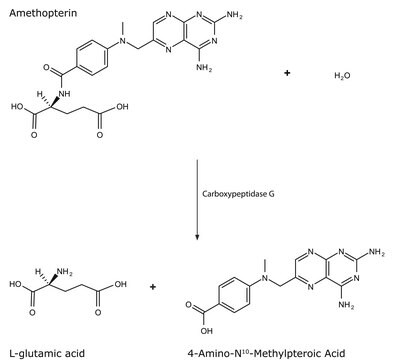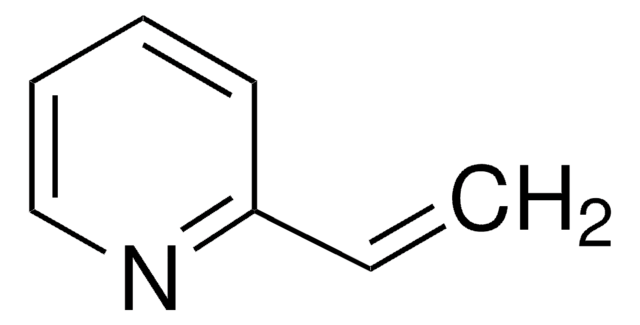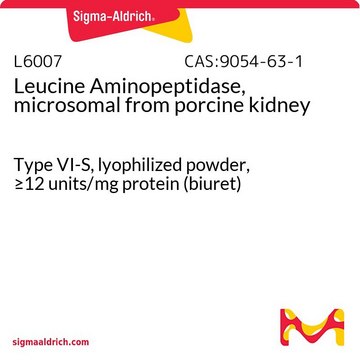SAE0046
Carboxypeptidase A from bovine pancreas
(Type II-PMSF treated), ≥20 units/mg protein
Synonym(s):
Carboxypeptidase A, Carboxypolypeptidase, Peptidyl-L-amino-acid hydrolase
About This Item
Recommended Products
biological source
bovine pancreas
Quality Level
form
aqueous suspension
quality
(Type II-PMSF treated)
specific activity
≥20 units/mg protein
mol wt
~35 kDa
purified by
2× crystallization
impurities
≤0.05 BTEE units/mg protein chymotrpsin
≤10 BAEE units/mg protein trypsin
storage temp.
2-8°C
Looking for similar products? Visit Product Comparison Guide
Related Categories
General description
Application
Biochem/physiol Actions
Unit Definition
Preparation Note
Analysis Note
Regulatory Listings
Regulatory Listings are mainly provided for chemical products. Only limited information can be provided here for non-chemical products. No entry means none of the components are listed. It is the user’s obligation to ensure the safe and legal use of the product.
ISHL Notified Names
Substances Subject to be Notified Names
JAN Code
SAE0046-500UN:
SAE0046-VAR:
SAE0046-BULK:
SAE0046-2.5KU:
SAE0046-5KU:
Choose from one of the most recent versions:
Certificates of Analysis (COA)
Don't see the Right Version?
If you require a particular version, you can look up a specific certificate by the Lot or Batch number.
Already Own This Product?
Find documentation for the products that you have recently purchased in the Document Library.
Customers Also Viewed
Global Trade Item Number
| SKU | GTIN |
|---|---|
| SAE0046-2.5KU | 4061832707723 |
| SAE0046-500UN | 4061832707730 |
| SAE0046-5KU | 4061832707747 |
Our team of scientists has experience in all areas of research including Life Science, Material Science, Chemical Synthesis, Chromatography, Analytical and many others.
Contact Technical Service













